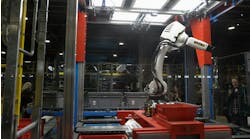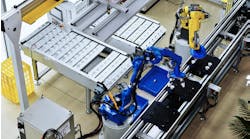What you'll learn:
- Help model standard components and use them to create economically feasible digital twins.
- Configurable products allow companies to provide a better buying experience and satisfy a broader range of customer requirements.
- Implementing the right organizational processes and approaches to enable this extensive configuration can also be challenging.
As we move toward the rise of the integrated manufacturing company, complexity is steadily escalating. These days, instead of solutions that are fully customized as a one-off development, customers are looking for solutions that come with customizable options that they can adapt as they grow.
Customers are increasingly aware of the value of standardization, including the equipment. Improving customer experience is less about having all the suitable options from the get-go and more about letting customers create their optimal product without extra costs or overhead.
See also: Reliability teams need AI-ready digital blueprints now more than ever
AI can help organizations enable this approach. One way is to help model standard components and use them to create economically feasible digital twins that can be used first for simulation to validate the solution and later, once the product is in production, to provide proactive service. This provides a significant efficiency gain for the manufacturer as well as the client.
Configurable products allow companies to provide a better buying experience and satisfy a broader range of customer requirements, whether cars, washing machines or industrial machinery, with less complexity.
What is your company doing about cybersecurity?
However, implementing the right organizational processes and approaches to enable this extensive configuration can also be challenging. This is where Configuration Lifecycle Management (CLM) can fit in. This relatively new field encompasses a process for overseeing the entire lifecycle of a configurable product.
Webinar: Cybersecurity center stage in 2025 and beyond
It ensures consistent and accurate configurations across design, manufacturing, and service. CLM significantly reduces errors, improves efficiency and aligns teams with product data. In fact, it’s possible to see as much as a 50% reduction in engineering costs and a 20% improvement in product margins.
From what we’ve seen, there are two common patterns when it comes to CLM implementation. There are very mature enterprises, many of which are in Europe, with a significant number of variations and configurations already in place.
These corporations already operate long-standing CLM practices and want to reach the next level. They have a high economy of scale because they produce a high volume of configurations—and they're doing configuration on a product-by-product basis.
On the other side are corporations that operate in a more built-to-order fashion, with a great deal of institutional knowledge that isn't necessarily documented entirely or found in one centralized location. Trying to unify and centralize all the information is critical for creating a streamlined configuration approach, but this can be difficult.
How AI is coming into play
AI is the manufacturing industry’s strong new ally. These technologies can improve the analysis of large datasets to find knowledge gaps, offer solutions, and empower teams to create scalable new efficiencies. In the configurable product space, we already see many positive impacts of AI. For one thing, it can help those enterprises mentioned above (that operate in a more built-to-order fashion) advance their CLM maturity.
The AI trap: Why manufacturers fail without the right data
Until now, these enterprises had to go through a painful process of standardization before they could start to do configuration efficiently. Attempting to bring together all the necessary information living in disparate locations (employees’ brains, drawings, etc.) into one centralized repository is challenging.
Even if you can do this, defining standards across different locations, industries, product lines, etc., can be another challenge. It requires transferring your standard into a mathematical representation that is the data basis for your configuration platform, which is difficult. It often takes a couple of years to see real results from this.
What if there was a better way to move from this fragmented status to the next level using a CLM/product configurator solution in a way that drives value more quickly? AI can help support this process by creating a path to that configuration knowledge, bringing it from employees’ heads to a place where it’s accessible and shareable. AI enables a better way to convert companies’ content and competence into a usable format.
Survey: AI speeding past ‘hype’ and toward ‘mature’ adoption, though IT and OT differ in use
Let's take the example of ChatGPT. Currently, you can upload certain documents into this tool or prompt it to search the internet. Maybe you have pictures and videos of what your product needs to look like, a spare parts list, and a bill of materials. Maybe you have a Salesforce instance where a customer provides reviews of various components.
Now, imagine taking all this content and feeding it into a special AI model, and you can tell the model to use that content (and from the specification of a configurator) to define the standards.
This will give you a first draft of what the standard modules of the product you're building could look like. You'll be able to get the information you need into the format that a configurator needs. It's not about replacing humans; it's about using AI to enhance employees' abilities, automate some of the manual tasks, and ultimately serve as support.
See also: Toyota weaves the city of its future
By applying this process to your engineering knowledge, you can gain a first draft of your potential configuration standards that can serve as a basis for your next iteration.
Once you've unlocked the ability to feed the needed information cohesively into the product configurator, you'll be set up to unlock the efficiency gains you are looking for. Successfully using a product configurator opens a whole new world of possibilities for additional improvements.





